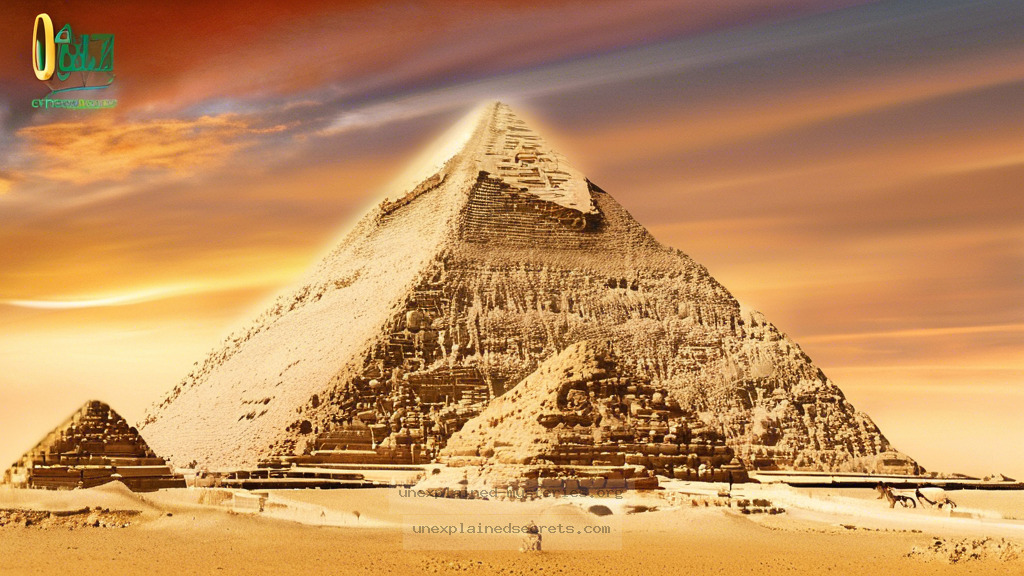What Secrets Do the Pyramids of Giza Still Hold That Have Eluded Archaeologists for Centuries?
What Secrets Do the Pyramids of Giza Still Hold That Have Eluded Archaeologists for Centuries?
The Pyramids of Giza, particularly the Great Pyramid, have captured the imagination of historians, archaeologists, and curious minds for millennia. They are monumental achievements of engineering and artistry, yet they also harbor secrets that remain tantalizingly out of reach. What makes these structures so enigmatic? As we delve into the mysteries surrounding them, we uncover not just the monumental achievements of ancient Egyptians but also the deeper questions of lost knowledge, advanced technology, and the very essence of human ingenuity. This exploration matters because it pushes us to reconsider what we know about ancient civilizations and the limits of our understanding.
Historical Context of the Pyramids
The Pyramids of Giza were constructed during the Fourth Dynasty of the Old Kingdom of Egypt, around 2580 to 2560 BCE. The Great Pyramid, built for Pharaoh Khufu, stands as the largest of the three pyramids and is a testament to the sophistication of ancient Egyptian society. These structures were originally part of a larger complex that included temples, smaller pyramids for queens, and burial grounds. The precise methods of construction remain a topic of debate, with theories ranging from the use of ramps to advanced machinery that has yet to be discovered.
During the time of their construction, Egypt was a thriving civilization with a well-developed system of writing, mathematics, and architecture. This cultural milieu provided the resources necessary for such grand projects, yet the exact techniques and knowledge used to create the pyramids remain elusive.
Core Concepts: Theories of Construction
Various theories have emerged regarding the construction of the pyramids. Some scholars assert that a straight or zigzagging ramp was used to transport the massive stones, while others propose that a circular ramp was built around the pyramid as it rose, allowing workers to move stones more efficiently. However, the question remains: how did they manage the logistics of such an enormous workforce and the transportation of materials?
Another popular theory suggests that the ancient Egyptians possessed advanced knowledge of astronomy and mathematics, allowing them to align the pyramids with remarkable precision. The Great Pyramid is aligned with incredible accuracy to the cardinal points, raising questions about the extent of their knowledge in these fields.
Evidence of Lost Technologies
One of the most compelling aspects of the Giza Pyramids is the evidence of technologies that may have been lost to time. Some researchers suggest that the Egyptians could have used a form of advanced engineering or even sound technology to lift the massive stones into place. This idea is supported by the discovery of ancient texts that suggest the use of sound for construction purposes, though these are often dismissed as mythological or allegorical.
Furthermore, the discovery of ancient tools, such as copper chisels and wooden sledges, raises questions about their effectiveness in moving such heavy materials. While these tools were indeed used, it is unclear how they achieved the precision and scale that the pyramids demanded.
Alternative Perspectives: Theories of Alien Involvement
Perhaps one of the most sensational theories is the idea that extraterrestrial beings assisted in the construction of the pyramids. This perspective, while lacking substantial evidence, has gained traction in popular culture, fueled by documentaries and books that suggest ancient aliens provided the technology and knowledge necessary for such monumental tasks.
While this theory captures the imagination, it diverts attention from the potential capabilities of ancient civilizations. The idea that humans alone could achieve such feats is far more compelling and encourages a deeper understanding of our own history.
Common Misconceptions and Clarifications
Many misconceptions surround the Pyramids of Giza, often perpetuated by pop culture. One common myth is that the pyramids were built by slaves; however, evidence suggests that the workforce consisted of skilled laborers who were well-fed and housed. These workers likely took pride in their contributions to the afterlife of their pharaohs.
Additionally, the misconception that the pyramids were built solely as tombs overlooks their potential as complex religious and cultural symbols. They served as a bridge between the earthly realm and the afterlife, representing the pharaoh’s divine journey.
Practical Implications for Ongoing Research
The ongoing exploration of the Giza Pyramids offers valuable insights into ancient Egyptian civilization and its technological prowess. Archaeologists continue to employ advanced technologies, such as ground-penetrating radar and 3D modeling, to uncover hidden chambers and understand the pyramids’ construction better. These methods have yielded promising results, revealing structures that were previously unknown.
| Technique | Description | Results |
|---|---|---|
| Ground-Penetrating Radar | Non-invasive method to detect voids and anomalies beneath the surface. | Discovery of hidden chambers and tunnels. |
| 3D Laser Scanning | Captures detailed measurements of the pyramids’ surface and structure. | Accurate models for further analysis and restoration efforts. |
| Drones | Utilization of aerial photography to survey the pyramids and surrounding areas. | Identification of previously unrecorded structures and features. |
Future Developments in Pyramidal Research
As technology advances, the scope of research concerning the Pyramids of Giza will continue to evolve. Innovations in artificial intelligence and machine learning may unlock new ways to analyze the data collected from various studies. Future excavations and studies may not only reveal more about the construction techniques but could also shed light on the everyday lives of those who built them.
Moreover, collaboration between international teams of archaeologists and historians is becoming more common, promoting a multi-disciplinary approach to understanding these ancient wonders. As we continue to ask questions and seek answers, the Pyramids of Giza remain a symbol of human curiosity and the quest for knowledge.
Conclusion: The Enduring Mystery of Giza
The Pyramids of Giza are more than just ancient tombs; they represent a complex tapestry of knowledge, culture, and history that beckons us to explore further. While many of their secrets remain unsolved, the journey of discovery continues to inspire researchers and enthusiasts alike. By challenging our assumptions and embracing a spirit of inquiry, we can uncover the legacies of ancient civilizations, enriching our understanding of humanity’s past and the potential of our future.
As we remain captivated by the enigmas of the pyramids, we recognize that the quest for knowledge is an ongoing adventure—one that connects us to the ingenuity of our ancestors and invites us to ponder the mysteries still hidden beneath the sands of time.
Other Articles
Recent Posts
- What Happened to Flight MH370? The Conspiracy Theories That Still Haunt Us
- What Secrets Lurk Within the Walls of the Infamous Trans-Allegheny Lunatic Asylum?
- What Evidence Supports the Existence of Bigfoot in the Pacific Northwest?
- What Happened to the Indus Valley Civilization? Unraveling the Mysteries of Ancient Urban Life
- Can Telepathy Be Scientifically Proven Through Laboratory Evidence?







